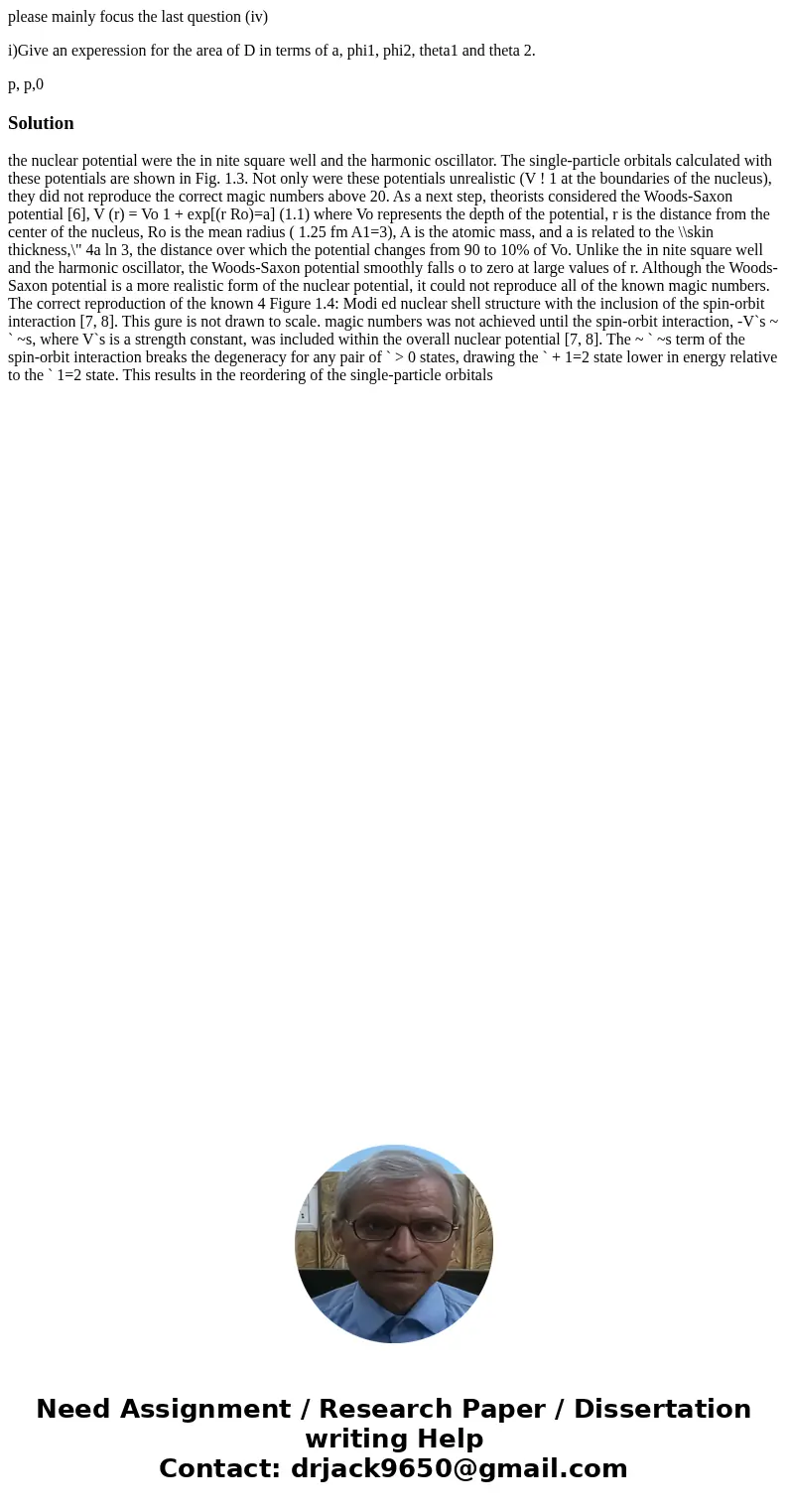please mainly focus the last question iv iGive an experessio
please mainly focus the last question (iv)
i)Give an experession for the area of D in terms of a, phi1, phi2, theta1 and theta 2.
p, p,0Solution
the nuclear potential were the in nite square well and the harmonic oscillator. The single-particle orbitals calculated with these potentials are shown in Fig. 1.3. Not only were these potentials unrealistic (V ! 1 at the boundaries of the nucleus), they did not reproduce the correct magic numbers above 20. As a next step, theorists considered the Woods-Saxon potential [6], V (r) = Vo 1 + exp[(r Ro)=a] (1.1) where Vo represents the depth of the potential, r is the distance from the center of the nucleus, Ro is the mean radius ( 1.25 fm A1=3), A is the atomic mass, and a is related to the \\skin thickness,\" 4a ln 3, the distance over which the potential changes from 90 to 10% of Vo. Unlike the in nite square well and the harmonic oscillator, the Woods-Saxon potential smoothly falls o to zero at large values of r. Although the Woods-Saxon potential is a more realistic form of the nuclear potential, it could not reproduce all of the known magic numbers. The correct reproduction of the known 4 Figure 1.4: Modi ed nuclear shell structure with the inclusion of the spin-orbit interaction [7, 8]. This gure is not drawn to scale. magic numbers was not achieved until the spin-orbit interaction, -V`s ~ ` ~s, where V`s is a strength constant, was included within the overall nuclear potential [7, 8]. The ~ ` ~s term of the spin-orbit interaction breaks the degeneracy for any pair of ` > 0 states, drawing the ` + 1=2 state lower in energy relative to the ` 1=2 state. This results in the reordering of the single-particle orbitals

 Homework Sourse
Homework Sourse